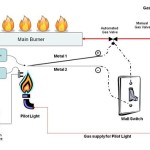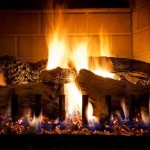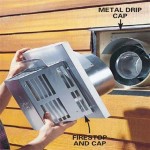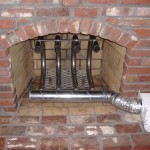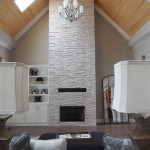Art Deco Style Fireplace Screens: A Synthesis of Function and Geometric Elegance
Art Deco fireplace screens represent a compelling intersection of functional necessity and artistic expression. Originating in the early 20th century and reaching its peak between the two World Wars, the Art Deco movement embraced a sophisticated blend of modernity, luxury, and industrial design. Applied to fireplace screens, this translated into objects that were not merely utilitarian barriers, but rather striking focal points within the home, embodying the era's distinctive aesthetic principles.
The primary function of a fireplace screen is, of course, to contain sparks and embers, preventing them from escaping the hearth and potentially causing fires. However, Art Deco screens transcended this purely practical purpose. They became integral elements of interior design, reflecting the broader Art Deco ethos of optimism, progress, and refined taste. The materials, motifs, and overall design of these screens were carefully considered to complement and enhance the surrounding architecture and décor.
Unlike earlier styles that often emphasized ornate details and naturalistic motifs, Art Deco favored streamlined forms, geometric patterns, and luxurious materials. This resulted in fireplace screens that were both elegant and visually arresting, contributing to the overall ambiance of a room. The style’s influence can be seen in the bold shapes, metallic finishes, and stylized representations of nature that characterize these pieces.
Key Elements of Art Deco Fireplace Screen Design
Several key characteristics define Art Deco fireplace screen design. These elements contribute to the style's distinct aesthetic and distinguish it from preceding and subsequent movements.
Geometric Shapes and Patterns: One of the most recognizable features of Art Deco is its emphasis on geometric shapes. Fireplace screens often feature repeating patterns of chevrons, zigzags, sunbursts and stepped forms. These shapes were not merely decorative; they conveyed a sense of modernity and dynamism, reflecting the era's fascination with speed, technology, and the machine age. The symmetrical arrangements and precise lines contribute to a sense of order and control, qualities highly valued in Art Deco design.
Luxurious Materials: Art Deco embraced a range of high-quality materials, reflecting the era's association with glamour and sophistication. Common materials used in Art Deco fireplace screens include wrought iron, often with polished or plated finishes in chrome, nickel, or brass. These metals provided a lustrous sheen and added to the sense of luxury. Other materials, such as mirrored glass, lacquer, and exotic woods (like ebony or rosewood) were sometimes incorporated to further enhance the visual appeal. The combination of these materials created a striking contrast between textures and finishes.
Stylized Motifs: While Art Deco rejected literal representations of nature, it often incorporated stylized motifs inspired by the natural world. These motifs were typically simplified and abstracted, reflecting the movement's emphasis on form and design over realism. Common motifs include stylized flowers, flowing water, and representations of animals such as gazelles or peacocks. Even when depicting natural elements, the designs retained a strong geometric quality, with clean lines and symmetrical arrangements. These motifs added a touch of elegance and sophistication to the screens.
Materials and Construction Techniques Employed in Art Deco Fireplace Screens
The selection of materials and the methods used to construct Art Deco fireplace screens played a crucial role in achieving the desired aesthetic and ensuring functional performance. The careful consideration of both aspects contributed to the longevity and enduring appeal of these objects.
Wrought Iron and Metalwork: Wrought iron was a primary material for Art Deco fireplace screens due to its strength, durability, and versatility in shaping. Skilled metalworkers employed techniques such as forging, bending, and welding to create intricate designs with precise lines and geometric forms. After fabrication, the ironwork was often finished with polished or plated surfaces to enhance its visual appeal and protect it from corrosion. Chrome plating, in particular, was a popular choice, providing a sleek, reflective surface that complemented the Art Deco aesthetic. The use of wrought iron allowed for the creation of durable and visually striking screens that could withstand the high temperatures of a fireplace.
Decorative Elements: In addition to wrought iron, other materials were often incorporated to enhance the decorative appeal of Art Deco fireplace screens. Mirrored glass, for example, could be used to create a sense of depth and reflect light, adding to the overall glamour of the piece. Lacquered wood, often in contrasting colors, provided a smooth, glossy surface that complemented the metallic finishes. Exotic woods, such as ebony or rosewood, might be used as accents to add a touch of luxury and sophistication. These decorative elements were carefully integrated into the overall design, creating a harmonious and visually appealing composition. The craftsmanship involved in applying these decorative elements required skill and precision.
Mesh and Protective Elements: While the decorative aspects of Art Deco fireplace screens were important, their primary function was to protect against sparks and embers. To this end, a fine mesh, typically made of steel or brass, was incorporated into the design. This mesh served as a barrier, preventing hot embers from escaping the hearth while allowing heat to radiate into the room. The mesh was carefully integrated into the overall design, often concealed behind decorative elements to maintain a seamless appearance. The construction of the screen also involved careful attention to detail to ensure that all joints were securely fastened and that the screen was stable and durable.
The Enduring Appeal and Collecting Considerations of Art Deco Fireplace Screens
Art Deco fireplace screens continue to be highly sought after by collectors and design enthusiasts for their aesthetic beauty, historical significance, and functional utility. The enduring appeal of these objects stems from their ability to evoke the elegance and sophistication of the Art Deco era while also serving as a practical addition to the home.
Historical Significance: Art Deco fireplace screens represent a tangible link to a significant period in design history. They embody the stylistic principles and cultural values of the Art Deco movement, reflecting the era's fascination with modernity, luxury, and progress. Owning an Art Deco fireplace screen provides a connection to this rich historical context and allows one to appreciate the craftsmanship and artistic vision of the period. The screens serve as a reminder of the innovation and creativity that characterized the Art Deco era.
Aesthetic Value: The beauty of Art Deco fireplace screens lies in their sophisticated design, luxurious materials, and meticulous craftsmanship. The geometric patterns, stylized motifs, and polished finishes create a visually striking object that enhances the aesthetic appeal of any room. Whether used in a traditional or contemporary setting, these screens add a touch of elegance and sophistication to the décor. The screens’ timeless design ensures that they remain relevant and appealing to collectors and design enthusiasts.
Collecting Considerations: For those interested in collecting Art Deco fireplace screens, several factors should be taken into consideration. Condition is paramount; screens in good original condition are more valuable than those that have been heavily restored or altered. The quality of the materials and craftsmanship is also important; screens made with high-quality materials and meticulous attention to detail are more desirable. Rarity is another key factor; screens with unique designs or those produced by well-known designers or manufacturers command higher prices. Finally, provenance, or the history of ownership, can also affect the value of a screen. A screen with a documented history or connection to a notable figure is likely to be more sought after by collectors. The market for Art Deco fireplace screens can vary depending on location and demand, so it is advisable to consult with experts and do thorough research before making a purchase.
In conclusion, Art Deco fireplace screens are more than just functional objects; they are works of art that embody the elegance, sophistication, and modernity of the Art Deco era. Their design, materials, and construction reflect the era's values and aspirations, making them highly sought-after pieces for collectors and design enthusiasts alike.

Buy Dark Gold Art Deco Style Single Fireplace Screen In

Haardscherm Art Deco Fireplace Interior Furniture

Gold Art Deco Style Fireplace Screen 3 Panel Tri Fold Firescreen Interior Design Ideas

Fireplace Screen Classic Art Deco Single Panel Iron Tole Gold Decorative Screens

Art Deco Fireplace Brass Screen With 3d Modernist Design Sold Items Ironwork Collection

51 Decorative Fireplace Screens To Instantly Update Your

Single Panel Fireplace Screen Italian Gold Art Deco Design Delamere

Iron And Broe Fire Screen By Rose Ironworks 1920s Art Deco Fireplace Furniture Interior

Burnished Art Deco Fireplace Screen Door

Art Deco Style Fireplace Screens Home Decorations
Related Posts

